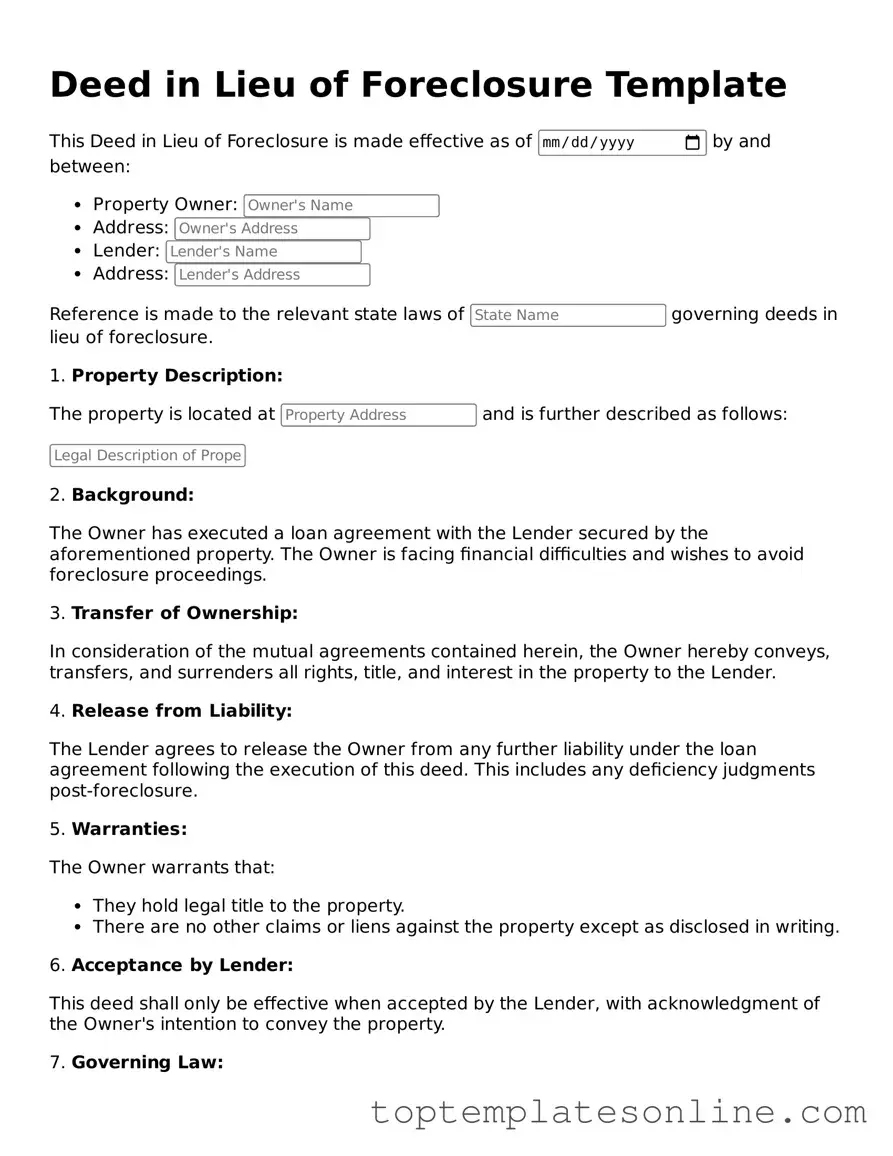Attorney-Approved Deed in Lieu of Foreclosure Form
A Deed in Lieu of Foreclosure is a legal document that allows a homeowner to transfer the title of their property to the lender in order to avoid foreclosure. This process can help both parties by simplifying the resolution of a mortgage default. Understanding this form is crucial for homeowners facing financial difficulties and seeking alternatives to foreclosure.
Customize Deed in Lieu of Foreclosure Here
